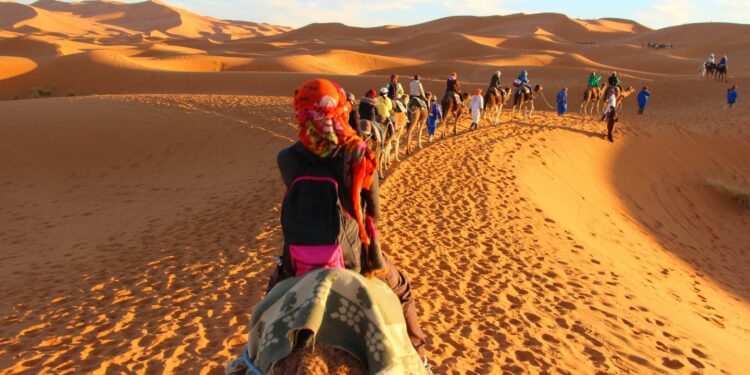- The African continent is home to more than 3,000, each with its own unique culture and traditions.
- Some of the most popular African tribes include the Zulu, Maasai, Yoruba, Oromo, Hausa, Fulani, Amhara, Somali, Samburu, Berber, Himba, San (Bushmen), and many more.
- These tribes have rich cultural heritages, distinct traditional clothing, and often have a strong oral tradition.
- They are spread across different regions in Africa, from South Africa to Ethiopia, Kenya to Namibia, and beyond.
- Exploring the diversity of these tribes allows us to appreciate the rich tapestry of African culture and heritage.
Africa, the second-largest continent in the world, is a land of incredible diversity. With 54 countries and over 3,000 tribes, Africa is a melting pot of cultures, languages, and traditions. Each tribe has its distinct way of life, from their unique languages to their traditional clothing and social customs.
These tribes have not only shaped the history and identity of their respective countries but have also contributed to the vibrant tapestry of African culture as a whole. By understanding and appreciating the diversity of these tribes, we can gain a deeper insight into the continent’s rich history and heritage.
So, let’s embark on a journey through Africa and discover some of the most fascinating tribes that call this continent home.
Exploring the Rich Tapestry: 20 African Tribes You Should Know
Africa is a continent known for its diverse range of tribes, each with its own unique cultural heritage. These tribes play a significant role in shaping the social fabric and identity of their respective countries. From traditional clothing to social status and customs, the tribes of Africa are a testament to the rich tapestry of the continent’s heritage.
1. Zulu: The Warriors of South Africa
The Zulu tribe is one of the most well-known tribes in South Africa. With a rich cultural heritage and a history dating back centuries, the Zulu people have played a significant role in shaping the country’s identity.
Known for their warrior traditions and strong oral tradition, the Zulu tribe has preserved their way of life through storytelling, music, and dance. The Zulu language, IsiZulu, is widely spoken by the community, further emphasizing the tribe’s cultural significance in South Africa.
2. Maasai: Nomadic Herders of Kenya and Tanzania
The Maasai tribe is a nomadic pastoralist community that resides in Kenya and Tanzania. Known for their distinctive red clothing and intricate beadwork, the Maasai people have a strong cultural identity that is deeply rooted in their traditions and way of life.
They are a proud and resilient tribe, known for their herding skills and their ability to adapt to the harsh environment of the region. The Maasai tribe is an important part of the cultural landscape of East Africa and continues to preserve their traditions and customs to this day.
3. Yoruba: Culturally Rich Tribe of Nigeria
The Yoruba tribe is one of the largest ethnic groups in Nigeria and is known for its rich cultural heritage. Located in West Africa, the Yoruba people have a long history that dates back centuries. They have made significant contributions to the arts, music, and literature of Nigeria.
With their vibrant festivals, intricate traditional clothing, and a strong sense of community, the Yoruba tribe continues to celebrate and preserve their unique cultural identity.
4. Oromo: The Largest Ethnic Group in Ethiopia
The Oromo people are the largest ethnic group in Ethiopia, with a population of over 35 million. Located primarily in southern Ethiopia, the Oromo people have a rich cultural heritage and a strong sense of identity.
They have their own language, Oromo, which is widely spoken in the region. The Oromo people have made significant contributions to Ethiopian history, culture, and politics. With their rich traditions, vibrant festivals, and deep connection to the land, the Oromo tribe is an integral part of Ethiopia’s diverse cultural landscape.
5. Hausa: Influential Tribe in West Africa
The Hausa tribe is one of the most influential tribes in West Africa. With a population of over 70 million, the Hausa people are spread across several countries, including Nigeria, Niger, Ghana, and Cameroon. Known for their strong oral tradition and storytelling skills, the Hausa people have a rich cultural heritage that is deeply rooted in their history and traditions.
They have their own language, Hausa, which is widely spoken in the region. The Hausa tribe has made significant contributions to the arts, literature, and music of West Africa.
6. Fulani: The Wandering Cattle Herders
The Fulani people, also known as the Fula or Fulbe, are a nomadic pastoralist tribe that spans across several West African countries, including Nigeria, Senegal, Guinea, and Niger. Known for their expertise in cattle herding, the Fulani people have a unique way of life that is centered around their livestock.
They are skilled herders and traders, known for their long-distance migrations in search of pastureland. The Fulani people have a rich cultural heritage and are known for their distinctive traditional clothing and intricate jewelry.
7. Amhara: The Historians of Ethiopia
The Amhara people are an ethnic group in Ethiopia known for their deep connection to Ethiopian history and culture. With a population of over 20 million, the Amhara people have a rich cultural heritage that is deeply intertwined with Ethiopian traditions and customs.
They have played a significant role in Ethiopian history, with many of the country’s rulers and emperors coming from the Amhara ethnic group. The Amhara people have contributed to the arts, literature, and music of Ethiopia, and their cultural heritage is celebrated and preserved to this day.
8. Somali: Nomads of the Horn of Africa
The Somali people are a nomadic tribe that resides in the Horn of Africa, which includes Somalia, Djibouti, Ethiopia, and Kenya. Known for their nomadic lifestyle, the Somali people have a rich cultural heritage that is deeply tied to their traditions and customs.
They are known for their intricate traditional clothing, vibrant music, and dance, and their strong sense of community. The Somali people have a long history of migration and trade, and they continue to preserve their cultural identity despite the challenges they have faced.
9. Samburu: Cousins of the Maasai in Kenya
The Samburu tribe is closely related to the Maasai people and resides in northern Kenya. Like the Maasai, the Samburu tribe is a pastoralist community that relies on herding livestock for their way of life. They have a strong sense of community and kinship ties, and their social structure is patriarchal.
The Samburu people have a rich cultural heritage, and their traditional clothing and adornments are distinctive and beautiful. They speak the Samburu language, which belongs to the Nilo-Saharan language family, and they have a deep connection to the land and wildlife of their region.
10. Berber: Indigenous People of North Africa
The Berber people, also known as Imazighen, are the indigenous people of North Africa. They reside in several countries, including Morocco, Algeria, Tunisia, Libya, and Mauritania. The Berber people have a rich and ancient culture that predates the Arab conquest of North Africa.
They have their own language, Tamazight, and a distinctive cultural heritage that includes traditional clothing, music, and dance. The Berber people have played a significant role in the history and culture of North Africa, and their traditions continue to be celebrated and preserved.
11. Himba: The Red People of Namibia
The Himba people are an indigenous tribe that resides in the remote regions of northern Namibia. Known for their distinctive red clothing and intricate hairstyles, the Himba people have a unique cultural identity that is deeply rooted in their traditions and way of life.
They are a semi-nomadic community that relies on cattle herding and farming for their livelihood. The Himba people have a strong spiritual connection to the land and their ancestors, and their traditional clothing and adornments are a reflection of their cultural heritage.
12. San (Bushmen): The Ancient Tribe of Southern Africa
The San people, also known as the Bushmen, are one of the oldest tribes in Southern Africa. They have a rich and ancient culture that dates back thousands of years, with a deep connection to the land and wildlife of the region.
The San people are hunter-gatherers, known for their exceptional tracking skills and their ability to live in harmony with nature.
They have a unique language, distinctive rock art, and a deep spiritual connection to the land. The San people have faced significant challenges over the years, but they continue to preserve their ancient culture and pass on their traditions to future generations.
13. Ashanti: Goldsmiths of Ghana
The Ashanti tribe, also known as the Asante, is one of the most famous tribes in Africa, particularly in Ghana. They are renowned for their exceptional craftsmanship and goldsmithing skills. The Ashanti people have a rich cultural heritage and are known for their intricate and beautifully designed gold jewelry.
One of the key aspects of Ashanti culture is the significance of gold. Gold holds immense value in Ashanti society and is seen as a symbol of wealth, power, and prestige. The Ashanti people believe that gold has spiritual qualities and is associated with the divine.
The Ashanti tribe also has a strong sense of community and tradition. They have a hierarchical social structure led by a king known as the Asantehene. The Ashanti people celebrate their culture through various traditional ceremonies and festivals, such as the Akwasidae and Adae festivals.
Overall, the Ashanti tribe of Ghana is known for their exceptional goldsmithing skills, rich cultural heritage, and strong sense of community.
14. Tuareg: The Blue People of the Sahara
The Tuareg tribe, also known as the “Blue People of the Sahara,” is one of the most fascinating and recognizable tribes in Africa. They are primarily nomadic pastoralists who inhabit the Sahara Desert, spanning across countries like Libya, Niger, and Algeria.
The Tuareg people are known for their distinctive traditional clothing, which includes indigo-dyed robes and turbans. The indigo color gives them the nickname “Blue People.” The indigo dye is believed to have protective qualities against the harsh desert environment, including the scorching sun and sandstorms.
Nomadic culture is an integral part of Tuareg identity. They travel with their herds of livestock, primarily camels, in search of grazing lands and water sources. The Tuareg tribe has a rich oral tradition, with storytelling and poetry playing a significant role in preserving their history and cultural heritage.
The Tuareg people have faced challenges in recent years due to political conflicts and the effects of climate change on their traditional way of life. However, they continue to strive to preserve their unique culture and maintain their strong sense of identity.
15. Igbo: Renowned for Their Vibrant Culture
The Igbo tribe, one of the largest ethnic groups in Nigeria, is renowned for its vibrant culture and rich traditions. The Igbo people are known for their colorful festivals, traditional ceremonies, and lively music and dance.
The Igbo tribe has a deep-rooted cultural heritage that is expressed through their traditional practices, beliefs, and social structures. They have a strong sense of community and place great importance on extended family relationships. The Igbo people also have a rich oral tradition, with storytelling being a significant part of their culture.
Traditional ceremonies and festivals play a vital role in Igbo culture. One of the most well-known Igbo festivals is the New Yam Festival, also known as “Iri Ji.” This festival celebrates the harvest season and is marked by feasting, dancing, and cultural performances.
The Igbo tribe has made significant contributions to Nigerian society in various fields, including literature, music, and business. They have a strong entrepreneurial spirit and are known for their resilience and determination.
16. Tutsi: The Cattle Herders of Rwanda and Burundi
The Tutsi tribe is an ethnic group that predominantly resides in Rwanda and Burundi. They are known for their cattle herding traditions and have a deep connection to their livestock.
Cattle have immense cultural and economic significance for the Tutsi people. They are considered a symbol of wealth and prestige and are often used as a measurement of social status. Cattle provide the Tutsi tribe with milk, meat, and other essential resources necessary for their livelihoods.
The Tutsi people have a hierarchical social structure, with a king or queen ruling over the community. They have a rich oral tradition and pass down their history and values through storytelling and folklore.
The Tutsi tribe has faced significant challenges in the past, particularly during the Rwandan Genocide in 1994. However, they have shown resilience and continue to preserve their cultural heritage and contribute to the development of their countries.
17. Pygmies: The Forest Dwellers of Central Africa
The Pygmies are a group of indigenous people who primarily inhabit the forests of Central Africa, including the Central African Republic, Cameroon, Gabon, and the Democratic Republic of Congo. They are known for their unique lifestyle and deep connection to the forest.
The Pygmies have a hunter-gatherer lifestyle and rely on the forest for their sustenance. They have a deep knowledge of the forest and its resources, using traditional hunting and gathering techniques to provide for their communities.
The Pygmies have a rich oral tradition and pass down their cultural knowledge through storytelling, music, and dance. They have a strong sense of community and place great importance on cooperative living and mutual support.
In recent years, the Pygmies have faced challenges due to deforestation and the encroachment of modern society on their traditional way of life. Efforts are being made to protect their rights and preserve their cultural heritage.
18. Kikuyu: The Majority Tribe of Kenya
The Kikuyu tribe is the largest ethnic group in Kenya, making up a significant percentage of the country’s population. They are known for their rich cultural practices and contributions to Kenyan society.
The Kikuyu people have a strong sense of community and place great importance on family and extended kinship ties. They have a matrilineal system, with descent traced through the female line, and the clan playing a crucial role in Kikuyu society.
Cultural practices such as storytelling, music, and dance are integral to Kikuyu culture. They have a strong oral tradition, with stories and proverbs being used to pass down wisdom and knowledge from one generation to another.
The Kikuyu tribe has made significant contributions to various sectors in Kenya, including politics, education, and business. They have a rich history and have played a pivotal role in shaping the country’s cultural and social fabric.
19. Mursi: Famous for Their Lip Plates in Ethiopia
The Mursi tribe is an indigenous ethnic group that resides in the remote Omo Valley of Southern Ethiopia. They are famous for their unique cultural practice of wearing lip plates, which is a significant aspect of their cultural identity.
For the Mursi people, lip plates are a symbol of beauty and cultural heritage. Girls as young as 15 years old have their bottom lip pierced, and gradually larger and heavier plates are inserted. The size of the lip plate represents the woman’s social status in the community.
The Mursi tribe is also known for their body scarification and intricate body painting. These practices serve as a form of self-expression and cultural identification within the tribe.
The Mursi people have faced challenges due to factors such as encroachment on their land and cultural assimilation. Efforts are being made to preserve their unique cultural practices and protect their rights as an indigenous community.
20. Ndebele: Known for Their Colorful Homes in South Africa
The Ndebele tribe is an ethnic group that primarily resides in South Africa, particularly in the Mpumalanga and Gauteng provinces. They are known for their distinctive and vibrant homes, which are a form of artistic expression and cultural identity.
The Ndebele people are famous for their colorful geometric patterns and intricate designs that adorn the exteriors of their homes. These patterns are created using traditional materials such as clay, cow dung, and natural pigments.
Artistic expression is an integral part of Ndebele culture, with women playing a significant role in creating and maintaining the unique artwork on their homes. The art of house painting has been passed down through generations, and each design holds symbolic meaning.
The Ndebele people also have a rich cultural heritage that includes traditional music, dance, and storytelling. They have made significant contributions to South African art and culture, and their colorful homes have become iconic symbols of their identity.




















